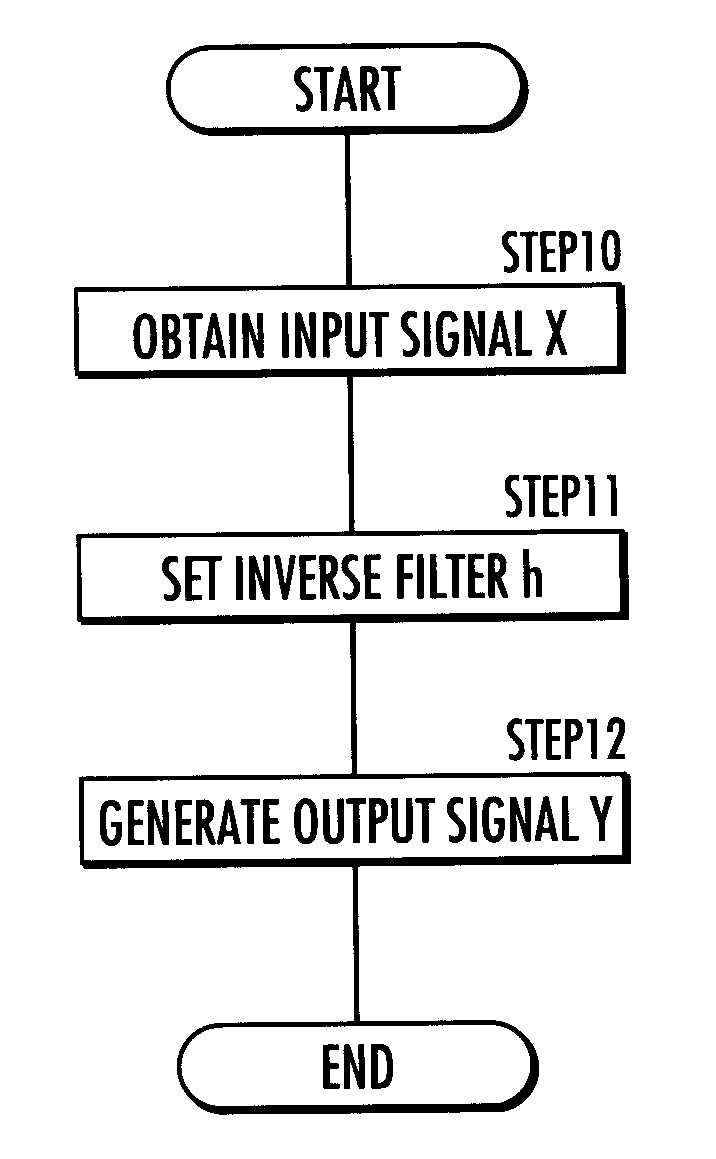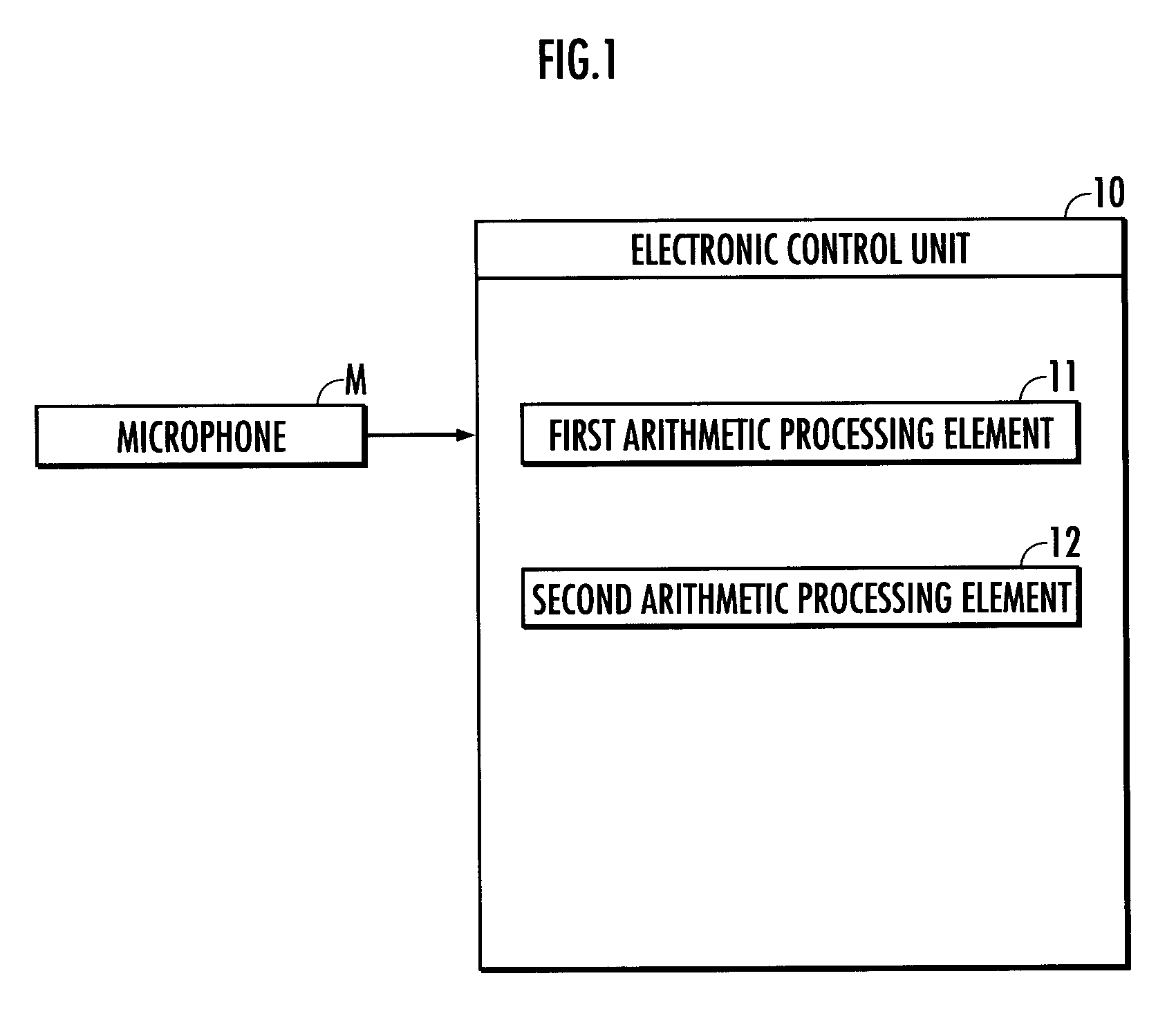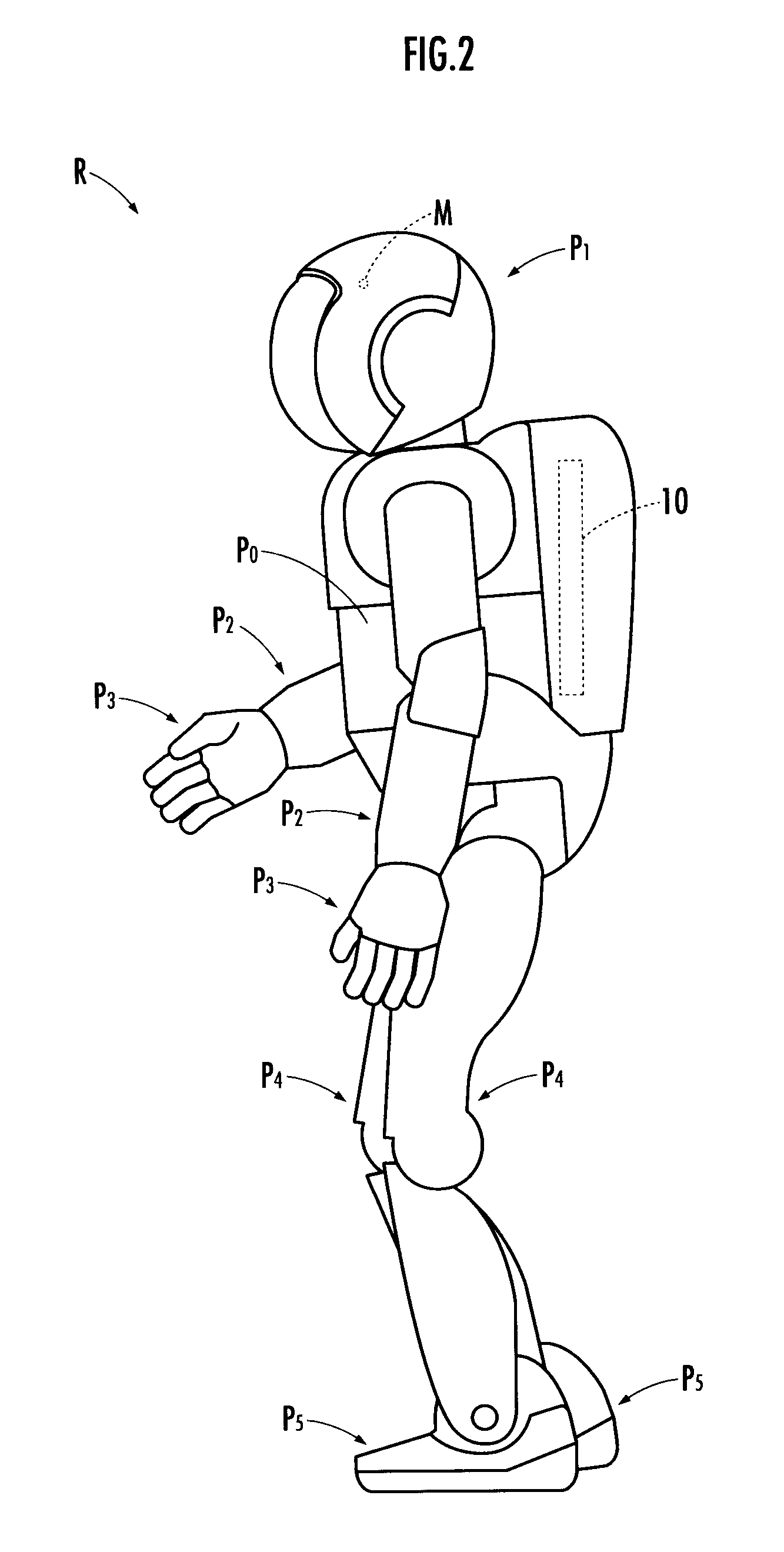Dereverberation system and dereverberation method
a dereverberation system and dereverberation technology, applied in the direction of electrical transducers, instruments, sound producing devices, etc., can solve the problem of difficulty in semi-blind mint processing methods, and achieve the effect of reducing calculation amount and calculation tim
- Summary
- Abstract
- Description
- Claims
- Application Information
AI Technical Summary
Benefits of technology
Problems solved by technology
Method used
Image
Examples
first embodiment
DIF: Decorrelation based Inverse Filter
[0054](Single Input / Output System) h(t) is obtained by excluding delay of the transfer system and assuming g(0)≠0 only. The relational expression (017) and rxy(0)=g(0) are expressed by the relational expression (111) rising an input signal vector (used for calculating the Correlation value) XL(t), an output y(t), a desired vector d of the correlation value, and an expectation value E[˜].
E[xL(t)y(t)]=d
xL(t)=[x(t)x(t−1) . . . x(t−L+1)] T
d=[g(0)0 . . . 0]T (111)
[0055]Herein, L=Ng+Nh−1. “T” denotes transposition.
[0056]The output y(t) is expressed by the relational expression (112) using an input signal vector (for the filter) xh(t) and a filter coefficient vector h.
y(t)=xhT(t)h
xh(t)=[x(t)x(t−1) . . . x(t−Nh+1)]T
h=[h(0)h(1) . . . h(Nh−1)]T (112)
[0057]Therefore, the relational expression (111) can be transformed to the equation (113).
Ph=d
R=E [xL(t)xhT(t)] (113)
[0058]Herein, R is a non-square correlation matrix of inputs of L rows by Nh columns...
second embodiment
DAIF: Decorrelation based Adaptive Inverse Filtering
[0065](Single Input / Output System)
[0066]An inverse filtering is performed adaptively by using the correlation values of the input and output signals. In order to obtain adaptively the solution to the relational expression (111), an error cost J(h) expressed by the relational expression (211) is defined.
J(h)=∥e∥2+σ∥h∥2
e=d−Rh (211)
[0067]Herein, “σ” is a weight to the norm of the solution. When the weight σ becomes greater, the variation of the transfer function or the robustness to noises is improved; however, the control accuracy degrades. h which makes minimum the error cost J(h) is obtained according to the gradient method by the relational expressions (212) and (213).
h=h−μJ′(h) (212)
J′(h)=−RT(d−Rh)+σh (213)
[0068]Herein, “μ” is a step-size parameter. The step-size parameter μ may be a constant or may be adjusted adaptively. As an adaptive adjusting method for the step-size parameter μ, the Newton method, for example, may be ad...
third embodiment
R-DAIF: Real time Decorrelation based Adaptive Inverse Filtering
[0072](Single Input / Output System)
[0073]R-DAIF is expressed by the relational expression (316) transformed from the relational expression (216) under the assumption that the following two conditions are satisfied.
J′(t)=−R̂T(t)(d−R(t)h(t))+σh (316)
[0074](A First Condition)
[0075]The filter h(t) varies slower than the estimated correlation matrix R̂(t), and the approximation formula (302) is valid.
Ew[xL(t)xh(t)]h(t)≈Ew[xL(t)y(t)] (301)
[0076](A Second Condition)
[0077]The non-stationary components of the estimated correlation matrix R̂(t) are less than the stationary components thereof, and the approximation formula (302) is valid.
RT(t)R̂(t)≈Ew[xn(t)xLT(t)xL(t)xnT(t)] (302)
[0078](Multiple Input / Output System)
[0079]R-DAIF in a multiple input / output system is calculated according to the relational expression (326).
J′(t)=−G(0)Ew[xNh(t)xT(t)]+Ew[pN(t)xNh(t)yT(t)+]σHh(t) PN(t)=∥xNL(t)∥2 (326)
[0080]In the multiple input / output...
PUM
 Login to View More
Login to View More Abstract
Description
Claims
Application Information
 Login to View More
Login to View More - R&D
- Intellectual Property
- Life Sciences
- Materials
- Tech Scout
- Unparalleled Data Quality
- Higher Quality Content
- 60% Fewer Hallucinations
Browse by: Latest US Patents, China's latest patents, Technical Efficacy Thesaurus, Application Domain, Technology Topic, Popular Technical Reports.
© 2025 PatSnap. All rights reserved.Legal|Privacy policy|Modern Slavery Act Transparency Statement|Sitemap|About US| Contact US: help@patsnap.com



